| BrianRxm | Coins in Movies | 137/419 |
| Gold Diggers of 1933 (1933) |
Showgirls wear old coin design costumes and sing "We're in the Money"
| Prev | Back | Next |
The 1933 film "Gold Diggers of 1933" begins with Broadway show girls performing a dance routine
to the song "We're in the Money" while wearing costumes made of large cardboard coins.
The film stars Dick Powell, Ruby Keeler, and Ginger Rogers and was released in May 1933.
It has many references to the 1930's Depression and the efforts to end it.
At one point, a girl who is broke announces that she is "off the gold standard."
The film also produced a theater advertising token.
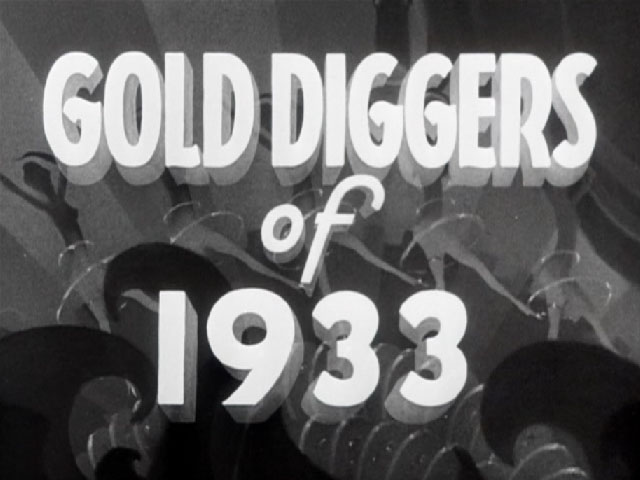
1. Title
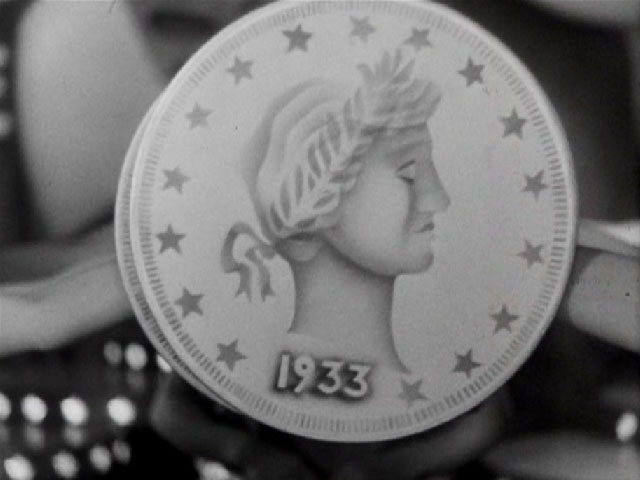
2. Title coin
The title coin is apparently based on the Charles Barber "Barber" design used for
United States silver coins from 1892 to 1916.
Some of these coins would have still been in circulation in 1933.
A "Barber" half dollar:
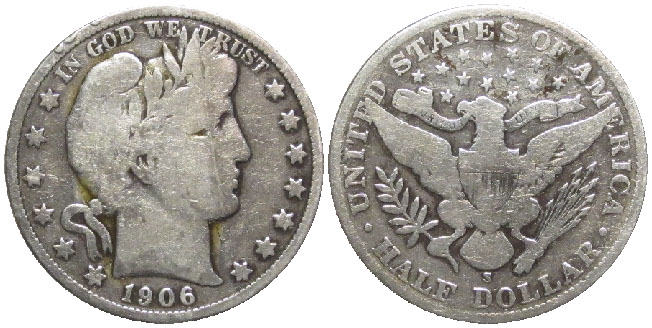
3. United States Barber half dollar 1906-S
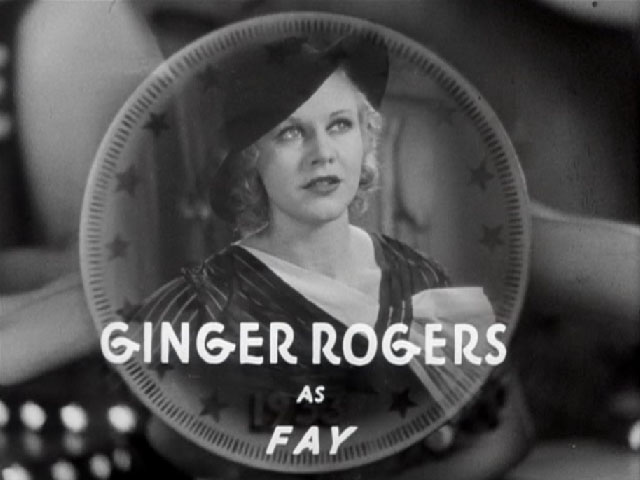
4. Coin credit for Ginger Rogers as Fay
The credits for the primary film stars appear at the beginning of the film.
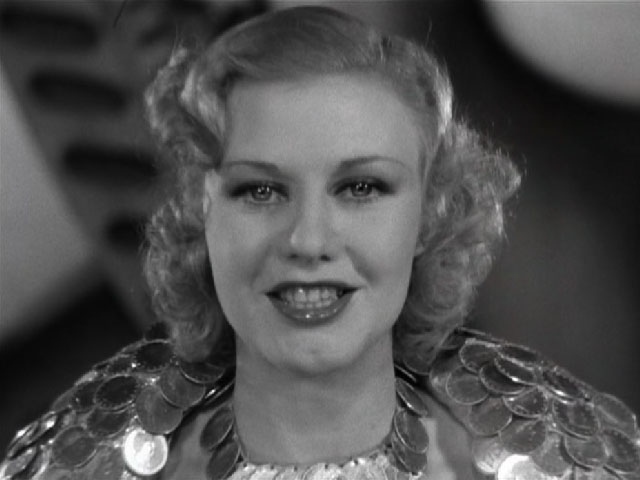
5. Ginger Rogers sings "We're in the Money"
She is covered with imitation coins, all with the "Barber" design.
The song "We're in the Money" is also known as the "The Gold Diggers' Song."
Gone are my blues and gone are my tears
I've got good news to shout in your ears
The long lost dollar has come back to the fold
With silver you can turn your dreams to gold
We're in the money, we're in the money
We've got a lot of what it takes to get along!
We're in the money, the sky is sunny
Old Man Depression, you are through, you done us wrong!
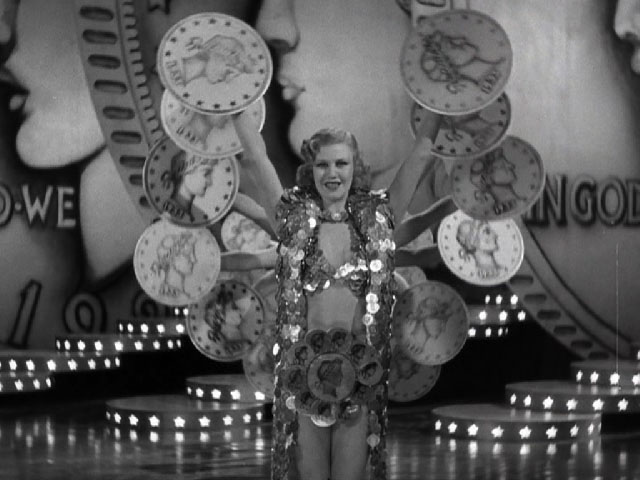
6. Ginger Rogers sings "We're in the Money"
Ginger (and the girls behind her) hold up the cardboard coins, resembling a many-armed
Indian goddess.
Then the first Busby Berkeley production begins with many girls holding cardboard coins.
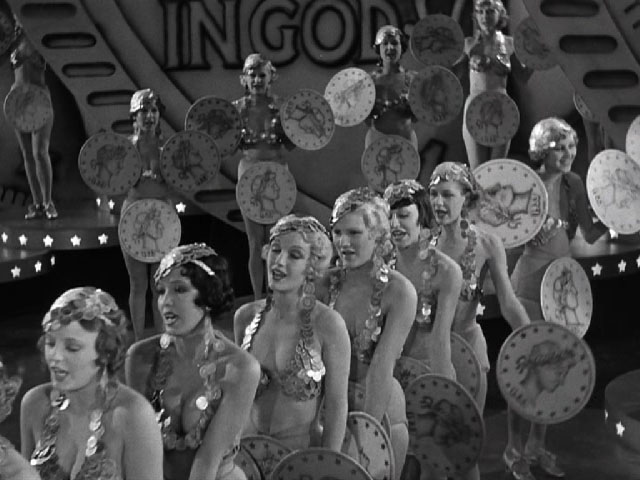
7. The girls do their number
The giant background coin has "In God (We Trust)."
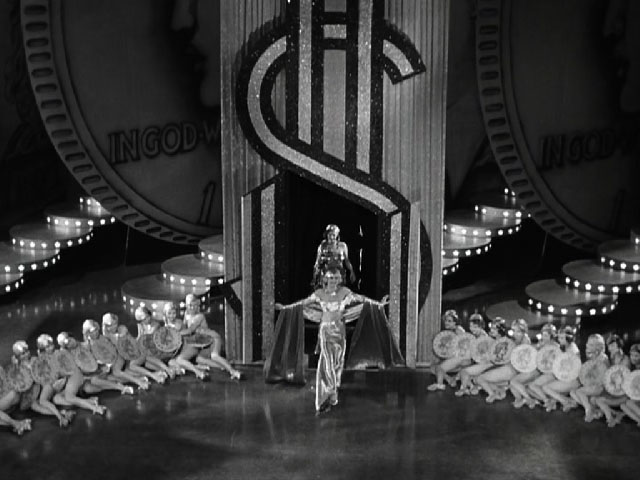
8. A dancer emerges from a large dollar sign ($)
She is really "in the money."
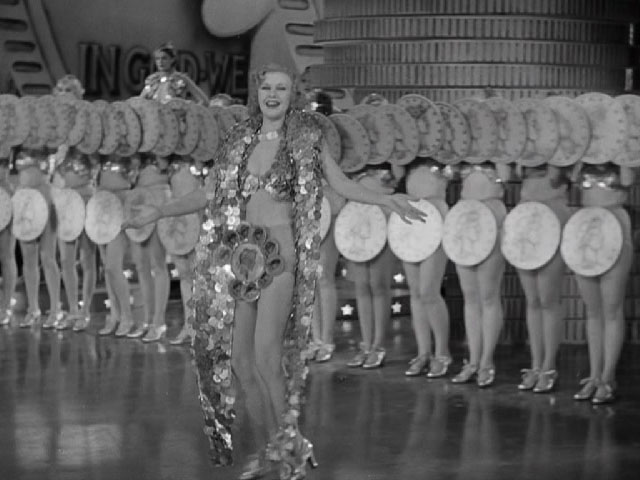
9. Ginger and the girls end the production
When the song production ends, the sheriff shows up with an order to close the show and
take the props and costumes.
One of the sheriff's men asks for a girl's costume.
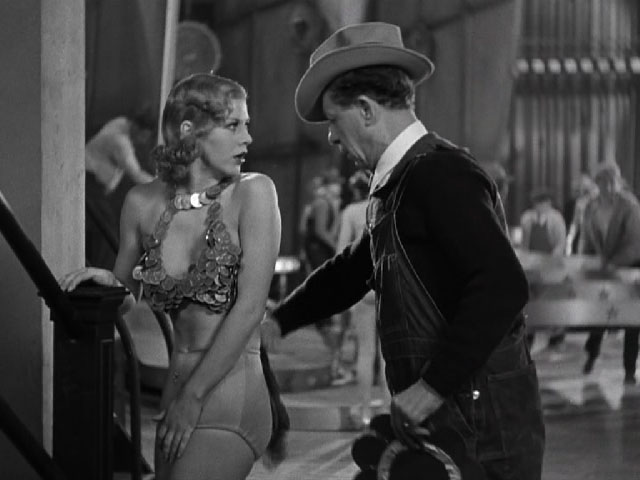
10. "I'll have to take that top"
The Motion Picture Production Code came in to effect in 1934, banning risqué lines like this one.
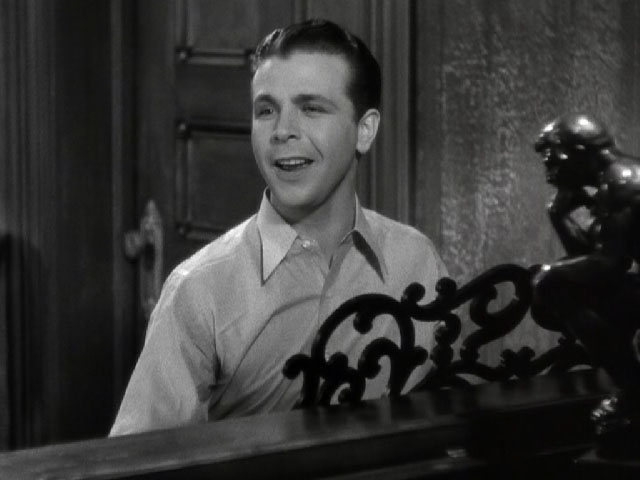
11. Dick Powell plays and sings
Brad lives across from Polly and her friends, and they are going together.
The girls hear about Barney's new show.
Gosh, to think that we're going to have real jobs again, earn money.
Yeah, and I've been off the gold standard so long.
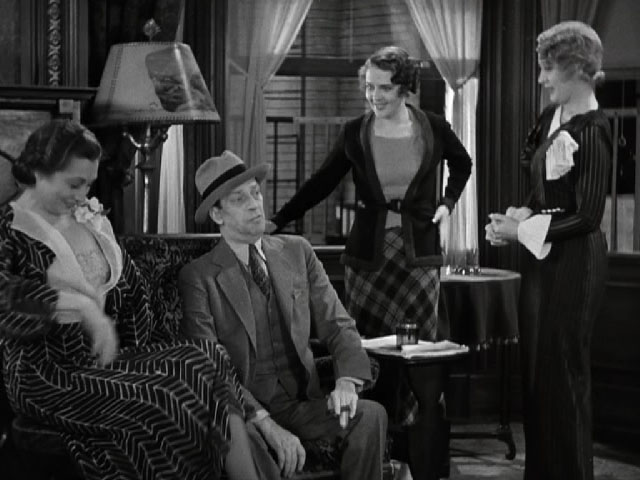
12. Trixie, Barney, Polly, Carol
Barney comes over to hire the girls for his new show.
As soon as he gets $15,000.
Brad puts up the $15,000, and the girls wonder where he got the money.
Just before the show opens on Broadway, Brad replaces the lead singer.
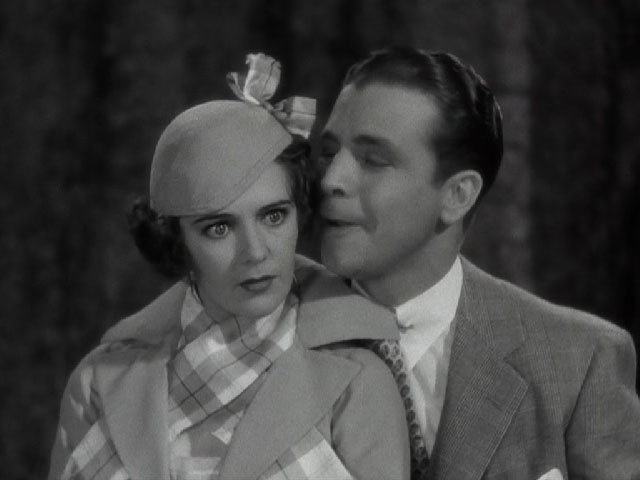
13. Dick Powell sings "Petting in the Park" to Polly
Another song with a risqué title becomes another Busby Berkeley dance production.
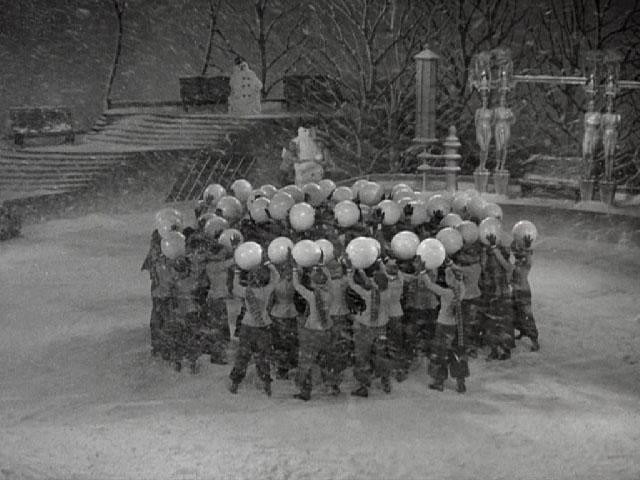
14. "Petting in the Park" production
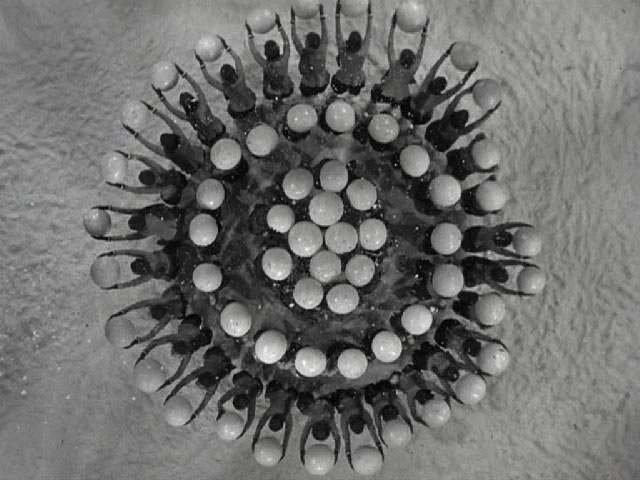
15. "Petting in the Park" production
Brad is spotted by people who know him as a rich Boston heir.
Brad's brother Lawrence arrives with Peabody, the family lawyer and orders him to leave
show business and rejoin the family business.
Lawrence also tries to break up Brad's romance with Polly as he thinks that chorus girls
are "gold diggers" and not suitable wives.
Lawrence and Peabody meet Polly's roommates and begin seeing them.
The girls trick Lawrence into believing that Carol is Polly; Brad also is involved in the deception.
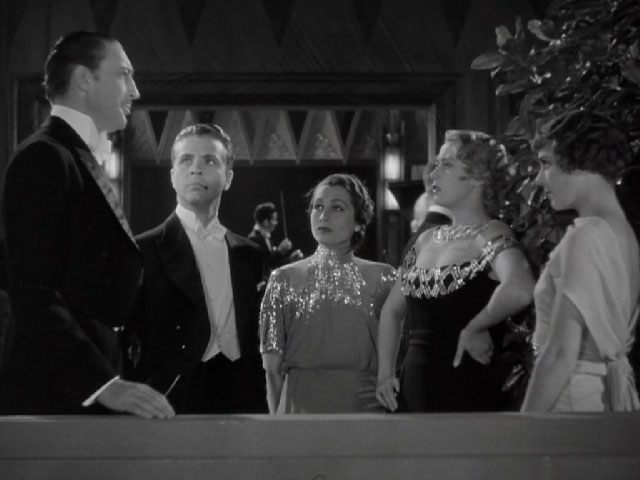
16. The two brothers and the three girls
Lawrence, Brad, Trixie, Carol, and Polly.
Lawyer Peabody is seeing Trixie and Lawrence is seeing Carol but believes she is Polly.
Trixie and Carol get Lawrence drunk, then place him in Carol's bed.
The next morning he wakes up and Trixie demands money for the false Polly's "services" and
Lawrence writes a check for $10,000.
The girls frame the check and place it on their wall.
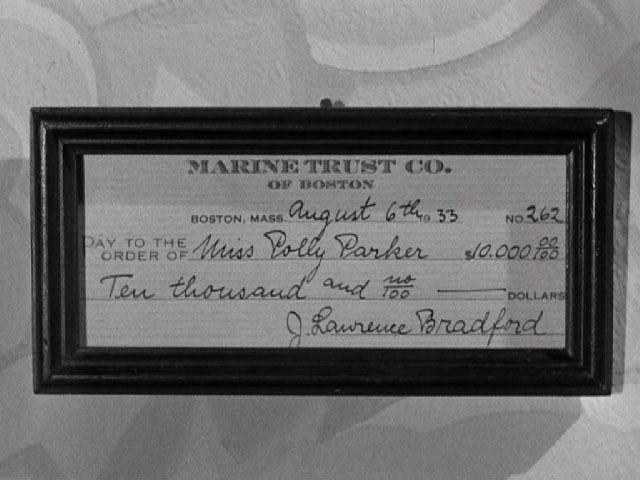
17. The check mounted on wall
The date on the check is August 6, 1933, giving a rough idea of when the story is set.
Back at the theatre, another Busby Berkeley dance number, "Shadow Waltz."
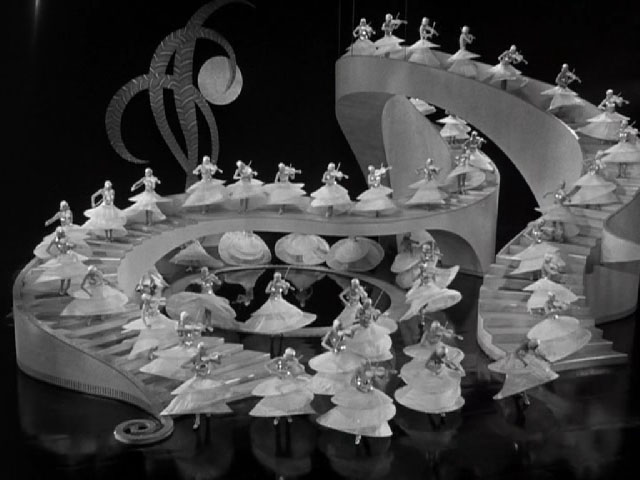
18. Busby Berkeley "Shadow Waltz" dance number
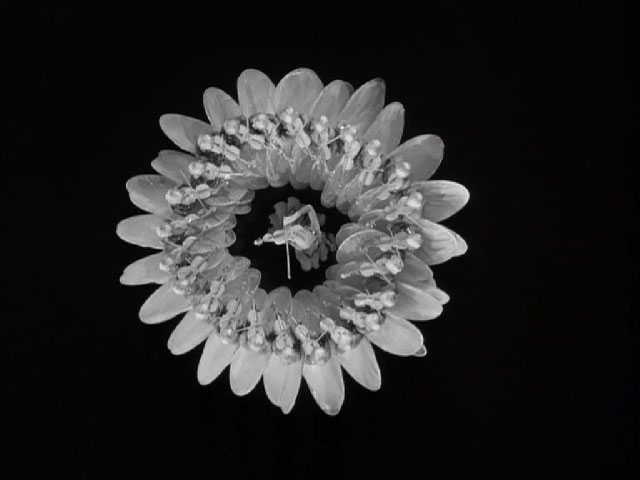
19. Busby Berkeley "Shadow Waltz" dance number
Things work out happily, all three girls find love with rich boyfriends, and the show becomes a hit.
In the show, a homeless man has just bummed a cigarette from Joan, leading to the famous song
"Remember my Forgotten Man" about the effects of the Depression on World War I veterans.
The title was based on a speech by the newly-inaugurated President Franklin D. Roosevelt.
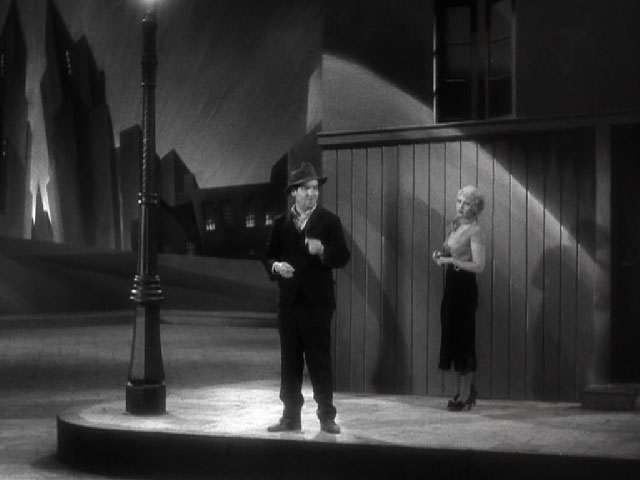
20. Joan Blondell sings "Remember my Forgotten Man"
Remember my forgotten man?
You put a rifle in his hand
You sent him far away
You shouted 'Hip hooray!'
But look at him today.
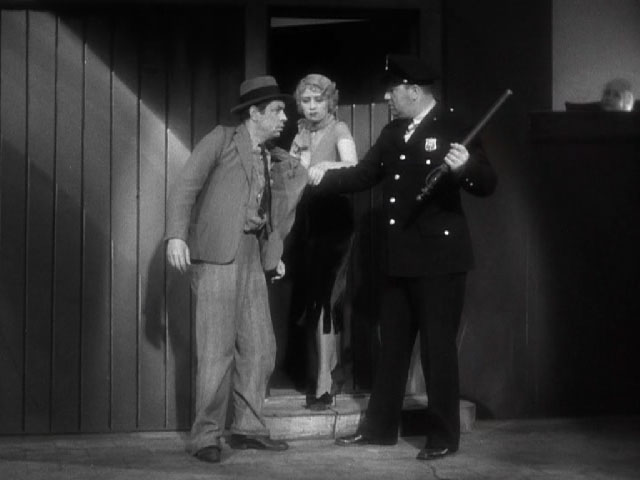
21. A policeman picks up a "forgotten man"
The policeman sees a medal indicating that the man is a World War I veteran and lets him go.
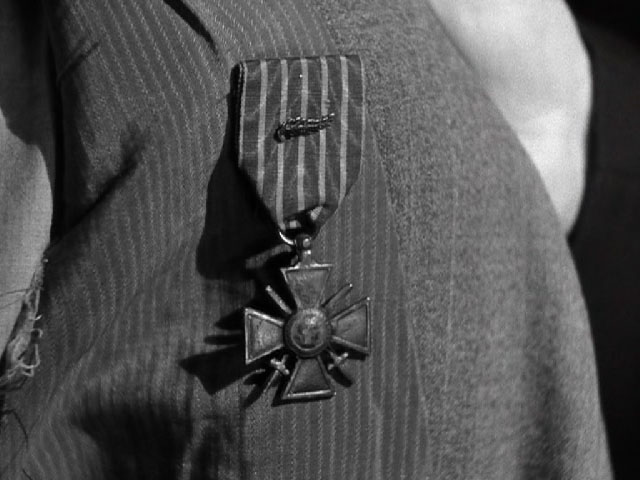
22. Forgotten man's medal
The medal is a French Croix De Guerre with Bronze Palm.
The French Government awarded these medals to some American servicemen.
Joan Blondell is then backed by a large production number.
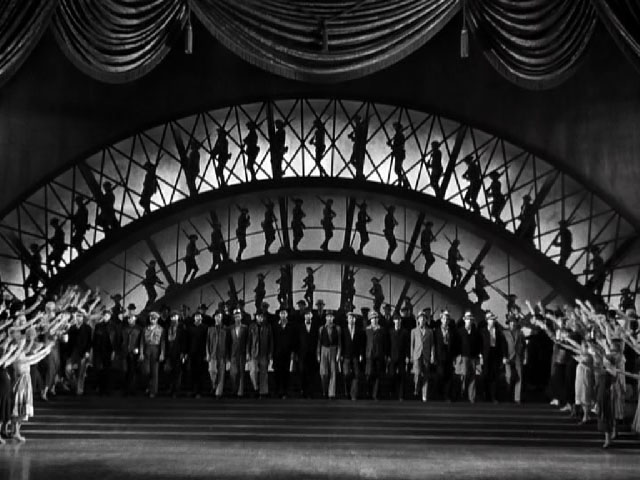
23. "Forgotten Man" production
Images of soldiers marching back veterans marching.
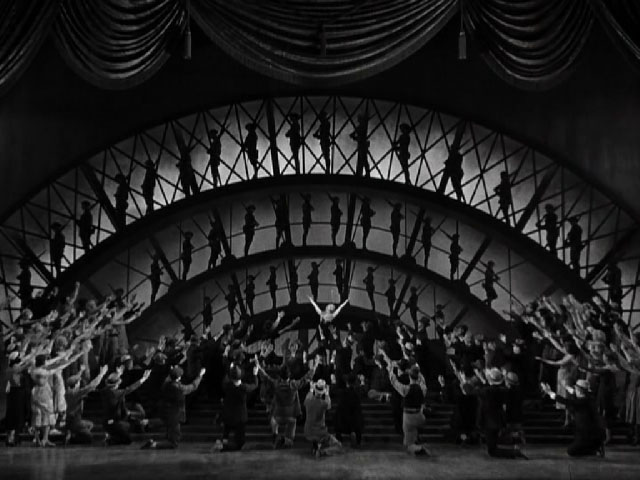
24. "Forgotten Man" finale
The film was a huge hit and moneymaker for Warner Brothers.
It was followed by several sequels.
Cast, Directors, Writers:
Dick Powell as Brad
Ruby Keeler as Polly
Joan Blondell as Carol
Aline MacMahon as Trixie
Ned Sparks as Barney
Ginger Rogers as Fay
Warren William as Lawrence
Guy Kibbee as Peabody
Director: Mervyn LeRoy
Musical numbers directed by Busby Berkeley
Writers: Erwin Gelsey, James Seymour, David Boehm, Ben Markson, Avery Hopwood
Songs written by Harry Warren and Al Dubin.
Ruby Keeler as Polly
Joan Blondell as Carol
Aline MacMahon as Trixie
Ned Sparks as Barney
Ginger Rogers as Fay
Warren William as Lawrence
Guy Kibbee as Peabody
Musical numbers directed by Busby Berkeley
Writers: Erwin Gelsey, James Seymour, David Boehm, Ben Markson, Avery Hopwood
Songs written by Harry Warren and Al Dubin.
Motion Picture Advertising Token:
This advertising token was issued in 1933 to promote the film by the Branford Theater,
possibly located in Newark, New Jersey or Branford, Connecticut.
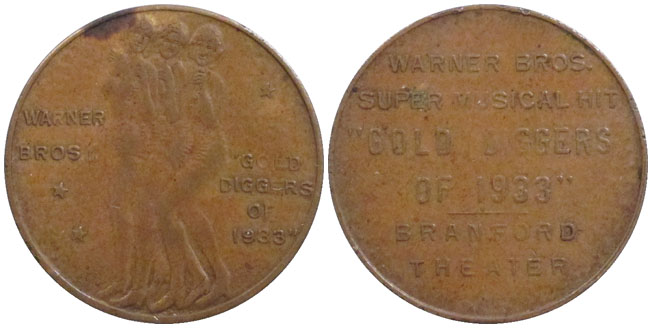
25. "Gold Diggers of 1933" Token
Bronze, 29 mm, 6.46 gm
Obverse:
Three women standing in dance costumes
WARNER BROS
"GOLD DIGGERS OF 1933"
Reverse:
No images
WARNER BROS.
SUPER MUSICAL HIT
"GOLD DIGGERS OF 1933"
BRANFORD THEATER
Three women standing in dance costumes
WARNER BROS
"GOLD DIGGERS OF 1933"
No images
WARNER BROS.
SUPER MUSICAL HIT
"GOLD DIGGERS OF 1933"
BRANFORD THEATER
The "Branford Theater" on the token is not further identified.
There was a motion picture theater by that name in Branford, Connecticut which burned down in 1953 and was rebuilt and later was converted to a condominium building. There was also a Branford Theater in Newark, New Jersey, which was open at the time the film was released.
There was a motion picture theater by that name in Branford, Connecticut which burned down in 1953 and was rebuilt and later was converted to a condominium building. There was also a Branford Theater in Newark, New Jersey, which was open at the time the film was released.
| Prev | Back | Next |